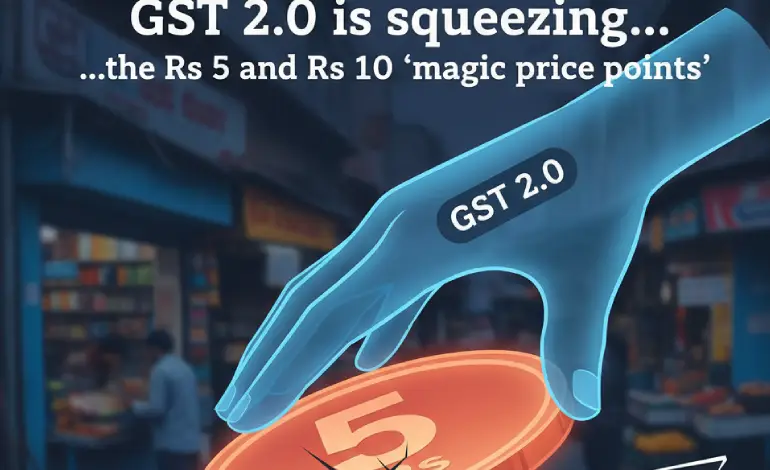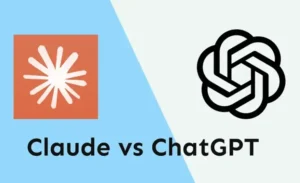For a generation of Indian shoppers, Rs 5 and Rs 10 packs were the easiest decision at the kirana counter—grab a biscuit sleeve, a chips sachet, a shampoo or a soap sliver, hand over a coin, done. Those two tags kept brands within reach, especially in value-conscious and rural markets. But that tidy math is getting messy. As the government pushes a GST “2.0” clean-up—rate rationalisation, tighter compliance, and a more consistent credit regime—FMCG companies are reworking their smallest packs. Add stubborn packaging, transport, and commodity costs, and the humble Rs 5/Rs 10 pack is suddenly hard to defend.
Here’s why. Tiny packs operate on razor-thin margins, and the cost stack is lopsided: packaging and distribution make up a much bigger share of the total than they do for larger SKUs. For years, brands absorbed inflation by quietly trimming grammage—what we popularly call shrinkflation—while holding MRPs steady at those beloved round numbers. But you can’t shrink a sachet forever without consumers noticing. With GST 2.0 nudging effective costs and compliance overheads up or down by small but meaningful amounts, the margin room left at Rs 5 and Rs 10 is vanishing.
So what are companies doing? Broadly, three things. First, they’re resetting the price ladder. Instead of forcing every entry SKU into Rs 5 or Rs 10, they’re migrating to “almost round” tags like Rs 6, Rs 8, Rs 12, and Rs 15. Those give a bit of cushion without shocking the shopper. Second, they’re leaning on bundles: multi-sachet strips, small combo-packs, or “5 + 1” style offers that lift the average selling price while still signaling value. Third, they’re being choosy. The Rs 5/Rs 10 packs that survive tend to be the absolute hero SKUs in high-velocity regions; fringe variants and slower movers are getting trimmed.
Retailers are a big part of this story. Kiranas love fast-turning, round-number packs because they keep cash flow simple and change-making painless. But if margins on a single piece collapse, retailers will push alternatives that protect their cents and paise—often the new Rs 6/8/12/15 options, or multi-packs that move the bill total up. Modern trade and quick-commerce throw in another twist: they can support exclusive pack sizes and promo-led pricing that don’t have to make sense at a neighbourhood counter. Expect more channel-specific SKUs and more regional variation in what price points actually show up.
From a shopper’s point of view, you’ll notice the change in small, practical ways:
- Fewer single packs at Rs 5/Rs 10; more Rs 6, Rs 8, Rs 12, and Rs 15 on the same shelf
- Slightly smaller packs at the same MRP, but with louder “value” or “improved” claims
- More multi-sachet strips and mini bundles near the counter instead of single pieces
- Offers and pack sizes that differ between kiranas, supermarkets, and quick-commerce apps
Are Rs 5 and Rs 10 dead? Not quite. They’re too culturally entrenched—and too useful for penetration in price-sensitive markets—to disappear overnight. But they’re no longer sacred. You’ll see brands treat them as tactical, not universal: keep a couple of flagship SKUs at Rs 5/10 in geographies where they still roar, and move the rest of the portfolio up the ladder. When input costs soften or promotions matter (festive spikes, rural push seasons), some companies might temporarily restore round numbers to spark trials. Over time, though, the steady direction is clear: fewer mass SKUs at the “magic” tags, more experimentation in the low-teens, and smarter pack architecture that protects margins without scaring off value hunters.
What could change the script? Three levers: clearer GST guidance that improves input credit flow for packaging and allied services; a downshift in commodity and logistics costs that restores some air to tiny-unit margins; and retailer feedback. If kiranas push back hard on odd price points—because coins and change become a headache—brands may reintroduce round-number price windows via promos or festival packs. Keep an eye on company earnings commentary and GST Council updates; small tweaks there tend to show up fast on the shelf.
GST 2.0 didn’t kill Rs 5 and Rs 10 on its own, but it’s accelerating a shift that rising costs already started. The new normal is a flexible price ladder—Rs 6/8/12/15, plus bundles—designed to keep entry affordability intact while making the unit economics finally add up.










